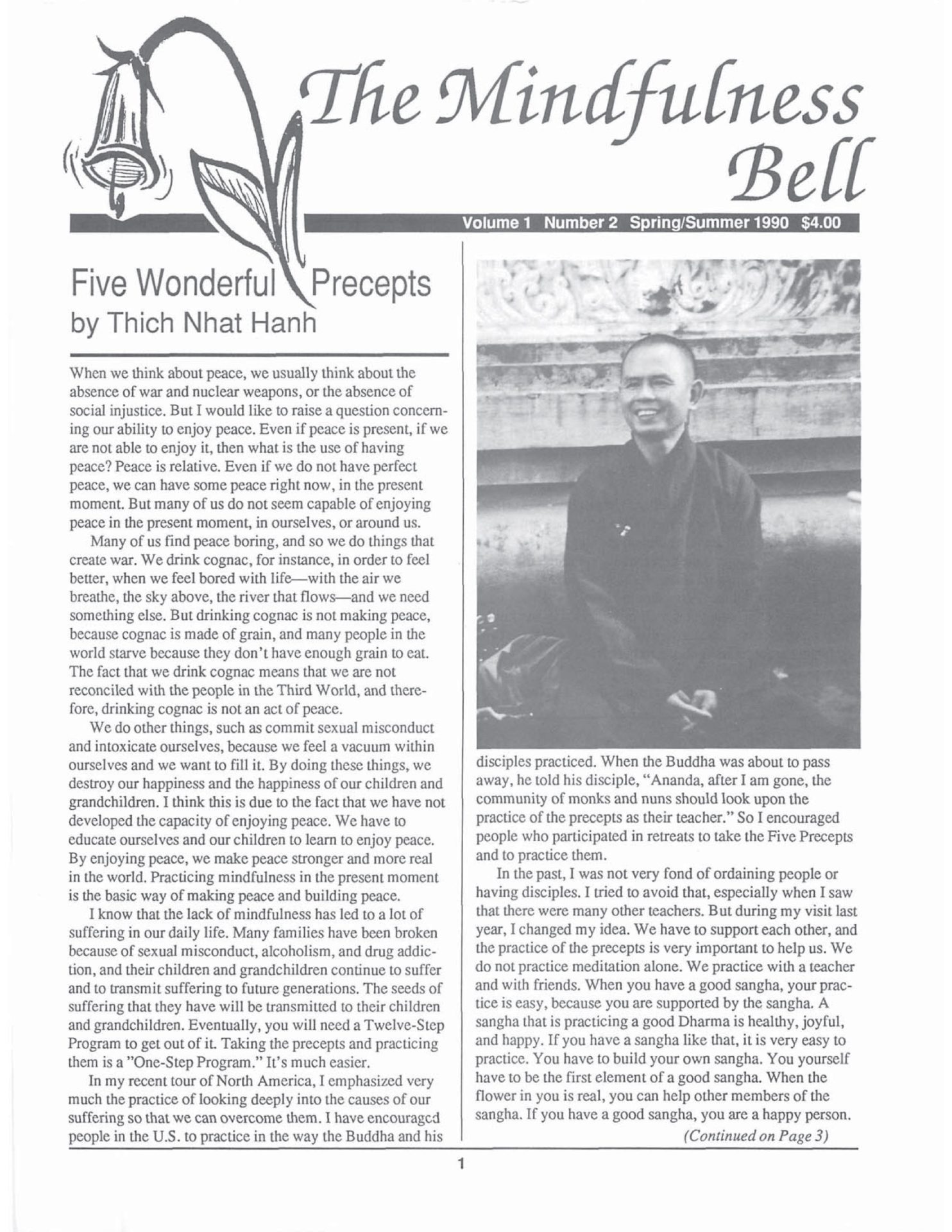In working as a hospice volunteer for the past four years, I have found mindfulness to be the key to visiting with dying people and their families. I follow my breathing to bring myself completely into the present moment so that can respond to the situation at hand with authenticity and emotional honesty. When someone is dying, the situation is often so charged emotionally that if I am unable to stay in the present moment I am soon overwhelmed not only by the emotions of the patients and their families,
In working as a hospice volunteer for the past four years, I have found mindfulness to be the key to visiting with dying people and their families. I follow my breathing to bring myself completely into the present moment so that can respond to the situation at hand with authenticity and emotional honesty. When someone is dying, the situation is often so charged emotionally that if I am unable to stay in the present moment I am soon overwhelmed not only by the emotions of the patients and their families, but also by my own emotions. When I am aware and present, I can risk feeling their pain and anger and not be swept away by it. I am reminded of a story of an old grandmother who had faithfully practiced meditation her whole life and was respected by her friends and neighbors for her understanding. One day she was told that her granddaughter had died. The old lady broke down and cried for many days. At last, a priest was sent to see her. He criticized her for carrying on so and suggested that she offer incense and sutra services for her granddaughter. The old grandmother looked at the priest and said, "You can assuage your grief by lighting incense and reciting sutras, but for me, when I'm grieving, I cry." When I'm grieving, I cry. When I'm happy, laugh. When I'm tired I sleep. When I'm hungry I eat. Just this, in the present moment. I don’t mean this in a narcissistic or hedonistic way, but rather as a way to use mindfulness to check in with myself, a way to know "where I'm at in my mind and heart so that can watch my anxieties and more fully open up to the situation at hand.
I have yet to encounter someone who was ready and willing to have a peaceful and harmonious death. All my patients and their families have been questioning, sad, guilty, and angry. Many deny that they or their loved one will soon be gone. And yet this seems completely natural to me.
There was a dying zen master who was asked what his last words to his disciples were and he replied, “I don’t want to die." His students were shocked and confused and sure that he had misunderstood the question, and so they asked him again. "Really, I don't want to die," he replied.
By being mindful with my patients, I allow them to explore whatever emotions they're feeling without the risk of my judging them. I cannot know what they must go through in this process of dying. I cannot judge their questioning or grief or denial, but I can be there for them. I see people struggling to give up everything they thought they were: their role as mother or father, wife or husband; their identity in the work world; their physical appearance; their friends and possessions; their very life. Few let go gracefully. But sometimes I can help just by being there, just taking one breath at a time and keeping my heart open to what's happening. Often as not I seemingly do nothing at all but breathe and stay open to my patient's great struggle.
One summer day, I was asked to sit with a man in a coma who was very near death. His bed was in the living room next to a large picture window. I chose a seat next to the bed where I could see both my patient, comatose and breathing with some difficulty, and the beautiful summer day out the window. As I sat there, I slowed my breath to match his and gradually, after some time I became aware that he was very much present in the room.
During the afternoon, his brother, whom he had not seen for several years, arrived, offered him my seat and mentioned as I was going outside that I thought his brother was present and could hear him. Outside I leaned up against a tree and continued to breathe and enjoy the beautiful day. His brother stayed with him about half an hour. When I came into the house and sat back down by my patient I saw tears running down his cheeks and dropping onto the pillow. I continued to follow my breath. His tears fell for several minutes. I sat with him and followed my breath, one breath after another, like his tears falling to the pillow.
Just being there may be enough to allow for people to find their own way. But practicing mindfulness also allows for me to respond appropriately when the situation calls for it. A touch, a smile, a listening ear, can call forth a flood of feelings or memories and help someone complete some unfinished business.
But no matter what I do for others, ultimately I benefit most by doing my practice in the context of hospice work. I am reminded how important each moment is and how short each life lasts I am witness to the great work we all have to do in our lifetime. And I am humbled by the mystery of living and dying.
Eileen Kiera
Deming, Washington.

